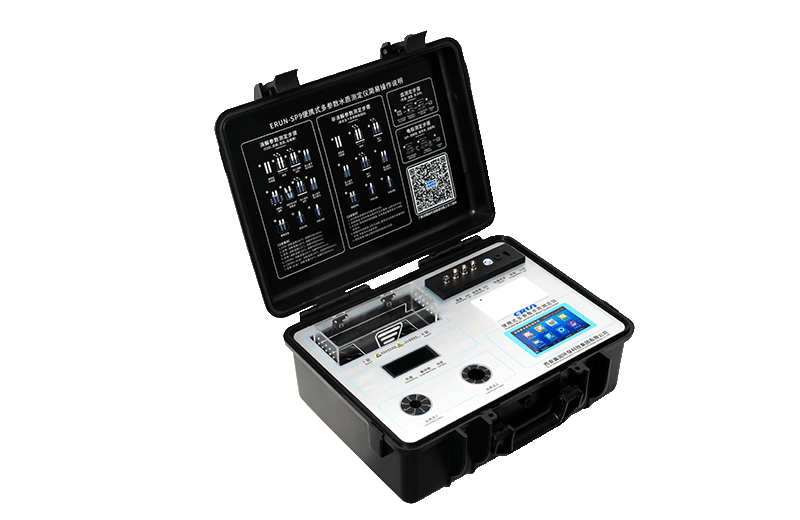Water conductivity is one of the most essential indicators in water quality analysis, yet many people overlook its significance. Conductivity indicates how well water conducts an electric current, which directly reflects the concentration of dissolved ions, such as chloride, sodium, calcium, magnesium, and other minerals or contaminants.
Understanding why water conductivity is important helps businesses, industries, and even households maintain safe, efficient, and compliant water systems. From municipal water supply to aquaculture and pharmaceutical production, conductivity affects safety, corrosion levels, system performance, and overall product quality.
This article explains why water conductivity plays such a critical role, how different industries rely on precise measurements, and why advanced multi-parameter instruments like the ERUN-SP9 are becoming essential for modern water quality monitoring.
Water conductivity measures the ability of ions in water to carry an electric charge. The more dissolved ions present, the higher the conductivity value.
Pure water has almost no conductivity
Contaminated or mineral-rich water shows higher conductivity
Sudden changes often signal pollution or system issues
Conductivity is usually measured in μS/cm or mS/cm and is widely used to evaluate water purity and contamination levels.
Dissolved salts (chlorides, sulfates, nitrates)
Temperature
Dissolved CO₂
Industrial discharge
Agricultural runoff
These variables make conductivity one of the fastest ways to detect water quality shifts.

High conductivity often means excessive dissolved ions or contaminants, while low conductivity indicates purer water. Many industries—especially pharmaceutical, electronics, and food processing—require extremely low conductivity water.
A sudden spike in conductivity may indicate:
Chemical spills
Sewage leaks
Industrial wastewater intrusion
Conductivity serves as a frontline alarm for contamination.
Water with very low conductivity or extremely high conductivity can cause corrosion in:
Municipal water pipelines
Industrial cooling systems
Boilers and thermal power equipment
Corrosion leads to leaks, costly repairs, and equipment failure.
Aquatic species depend on a stable ionic balance. Conductivity affects:
Fish health
Breeding success
Survival rates
Environmental agencies use conductivity trends to track ecosystem health.
High conductivity = high salinity.
High salinity = poor crop growth.
Farmers use conductivity to adjust irrigation water and soil conditions.
Regulators across multiple industries require conductivity records to verify that water meets safety and operational standards.
Conductivity ensures treated water remains within safe ionic levels and helps operators detect contamination in real time.
Taste, color, and safety depend on stable, low-conductivity process water.
Ultra-pure water with extremely low conductivity is crucial for production and lab processes.
Conductivity directly affects:
Scale formation
Heat exchange efficiency
Equipment lifespan
Stable conductivity supports the healthy growth of fish, shrimp, and aquatic plants.
Basic testers often lack the accuracy required for professional use. Incorrect readings can lead to:
Polluted water mistakenly appears safe, increasing safety and compliance risks.
Normal water appears contaminated, causing unnecessary treatment costs.
Accurate measurement is essential for making informed decisions.
The ERUN-SP9 is one of the most advanced, multi-parameter water testing instruments designed for professional water monitoring.
Advanced optical method + 16-channel design
Detects over 60 water parameters
Measures pH, conductivity, TDS, salinity, dissolved oxygen, and water temperature
Free parameter configuration for customized testing
High precision and rapid response
Portable and suitable for field or laboratory use

Municipal water treatment
Food & beverage manufacturing
Environmental monitoring agencies
Chemical & pharmaceutical production
Thermal power plants
Aquaculture & fisheries
Petrochemical and textile industries
Detects conductivity changes before they become system-wide issues
Helps ensure regulatory compliance
Supports preventive maintenance
Enhances product and environmental safety
The ERUN-SP9 enables users to monitor water quality more accurately, making it a powerful tool for maintaining stable conductivity levels and preventing operational problems.
Water conductivity is far more than a technical reading—it is a crucial factor that affects safety, environmental health, industrial efficiency, and regulatory compliance. Monitoring conductivity helps detect contamination early, prevent corrosion, protect ecosystems, and maintain product standards across multiple industries.
With advanced instruments like the ERUN-SP9, users can gain precise, multi-parameter insights into water quality and ensure that their operations remain safe, efficient, and compliant.